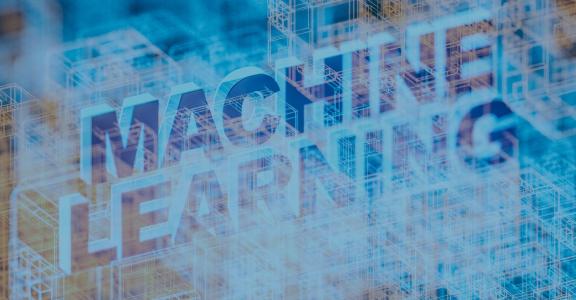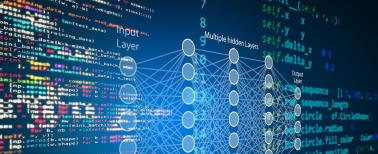Build practical ML skills with Python, Pandas, Sklearn, TensorFlow, and Keras.
Skills you will gain
- ML Problem Formulation: Identify and define machine learning problems to be solved.
- Algorithm Implementation: Understand and implement core ML algorithms like regression, classification, and clustering.
- Algorithm Insights: Explain the workings and practical benefits of various ML techniques.
- Performance Analysis: Analyze and evaluate the performance of ML solutions on real-world datasets.
- Hands-on Python Programming: Gain experience with Python-based libraries like Pandas, NumPy, and Sklearn to solve ML problems.
Course Description
Machine learning (ML) is the foundation for many artificial intelligence (AI), and ML algorithms that underlie online shopping recommendations, credit card fraud detection, relevant social media content delivery, rideshare trip pricing, and traffic navigation.
In this course you'll explore essential ML concepts, tools, and methodology, such as classical and modern algorithms that drive real-world applications such as search engines, image analysis, biometrics, industrial automation, and market segmentation. You'll work with practical data-driven applications and gain a practical background for creating new products and improving existing ones.
Starting with an introduction to the mathematics underlying ML, we'll leverage open source Python-based libraries, including Pandas, NumPy, and Sklearn. You'll improve your intuitive understanding of the underlying algorithms, such as regression, classification, and clustering, as well as related Python-based code samples. You'll work in a small team or by yourself on a project to present during the final week of class.
Topics
- Defining ML using simple problems and intuitive solutions for supervised learning and Bayesian classifiers
- Probability density
- Linear classifiers-common straightforward classifiers with practical applications
- Cross-validation in data-poor situations
- Principal component analysis-correlation matrices, eigenvalues, and eigenvectors
- Unsupervised Learning: Using accumulated buying histories from a customer database to evaluate the quality of clustering results
- Neural networks and deep learning: Without using complex mathematics, learn how neural networks are trained (Tensorflow and Keras)
- Natural language processing: How computer algorithms glean meaning and sentiment from written text and respond intelligently
Prerequisites / Skills Needed
For best results in this class, the following topics are highly recommended, some of which are covered in the suggested prerequisite course (listed below):
- Familiarity with Google Colaboratory and Jupyter Notebooks
- Reasonably good programming/debugging skills beyond the basic or beginner level
- Familiarity with Python programming, NumPy, and Pandas
- Comfortable with basic knowledge of algebra, calculus, probability and statistics
Additional Information
AI* - This class empowers students to harness the power of AI by learning how intelligent systems are designed, trained, and applied across real-world challenges. Students will use AI-driven tools and techniques to gain practical, industry-ready experience in building and deploying machine learning.
- Flexible Attend in person or via Zoom at scheduled times.
| Date | Start Time | End Time | Meeting Type | Location |
|---|---|---|---|---|
| Tue, 01-13-2026 | 6:00pm | 9:00pm | Flexible | SANTA CLARA / REMOTE |
| Tue, 01-20-2026 | 6:00pm | 9:00pm | Flexible | SANTA CLARA / REMOTE |
| Tue, 01-27-2026 | 6:00pm | 9:00pm | Flexible | SANTA CLARA / REMOTE |
| Tue, 02-03-2026 | 6:00pm | 9:00pm | Flexible | SANTA CLARA / REMOTE |
| Tue, 02-10-2026 | 6:00pm | 9:00pm | Flexible | SANTA CLARA / REMOTE |
| Tue, 02-17-2026 | 6:00pm | 9:00pm | Flexible | SANTA CLARA / REMOTE |
| Tue, 02-24-2026 | 6:00pm | 9:00pm | Flexible | SANTA CLARA / REMOTE |
| Tue, 03-03-2026 | 6:00pm | 9:00pm | Flexible | SANTA CLARA / REMOTE |
| Tue, 03-10-2026 | 6:00pm | 9:00pm | Flexible | SANTA CLARA / REMOTE |
| Tue, 03-17-2026 | 6:00pm | 9:00pm | Flexible | SANTA CLARA / REMOTE |
This class meets simultaneously in a classroom and remotely via Zoom. Students are expected to attend and participate in the course, either in-person or remotely, during the days and times that are specified on the course schedule. Students attending remotely are also strongly encouraged to have their cameras on to get the most out of the remote learning experience. Students attending the class in-person are expected to bring a laptop to each class meeting.
To see all meeting dates, click "Full Schedule" below.
You will be granted access in Canvas to your course site and course materials approximately 24 hours prior to the published start date of the course.
Programming Tools: Current version of Python with ability to install packages as needed.
- Flexible Attend in person or via Zoom at scheduled times.
| Date | Start Time | End Time | Meeting Type | Location |
|---|---|---|---|---|
| Wed, 04-08-2026 | 6:00pm | 9:00pm | Flexible | SANTA CLARA / REMOTE |
| Wed, 04-15-2026 | 6:00pm | 9:00pm | Flexible | SANTA CLARA / REMOTE |
| Wed, 04-22-2026 | 6:00pm | 9:00pm | Flexible | SANTA CLARA / REMOTE |
| Wed, 04-29-2026 | 6:00pm | 9:00pm | Flexible | SANTA CLARA / REMOTE |
| Wed, 05-06-2026 | 6:00pm | 9:00pm | Flexible | SANTA CLARA / REMOTE |
| Wed, 05-13-2026 | 6:00pm | 9:00pm | Flexible | SANTA CLARA / REMOTE |
| Wed, 05-20-2026 | 6:00pm | 9:00pm | Flexible | SANTA CLARA / REMOTE |
| Wed, 05-27-2026 | 6:00pm | 9:00pm | Flexible | SANTA CLARA / REMOTE |
| Wed, 06-03-2026 | 6:00pm | 9:00pm | Flexible | SANTA CLARA / REMOTE |
| Wed, 06-10-2026 | 6:00pm | 9:00pm | Flexible | SANTA CLARA / REMOTE |
This class meets simultaneously in a classroom and remotely via Zoom. Students are expected to attend and participate in the course, either in-person or remotely, during the days and times that are specified on the course schedule. Students attending remotely are also strongly encouraged to have their cameras on to get the most out of the remote learning experience. Students attending the class in-person are expected to bring a laptop to each class meeting.
To see all meeting dates, click "Full Schedule" below.
You will be granted access in Canvas to your course site and course materials approximately 24 hours prior to the published start date of the course.
Programming Tools: Current version of Python with ability to install packages as needed.
This course applies to these programs:







